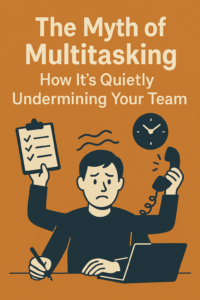In today’s interconnected professional landscape, your personal brand isn’t just a nice-to-have—it’s a strategic necessity for modern leadership. Whether you’re an emerging leader or a seasoned executive, how you’re perceived directly impacts your influence, opportunities, and ultimate success.
But what exactly is a personal brand for leaders in 2025? It’s far more than just your social media presence or job title. Your leadership brand is the unique combination of your values, expertise, communication style, and the impact you create—all packaged in a way that differentiates you in an increasingly competitive professional environment.
Let’s explore how to build a powerful, authentic personal brand that elevates your leadership and opens doors to new opportunities.
Why Personal Branding Matters for Leaders in 2025
The professional landscape has fundamentally shifted. With remote and hybrid work normalizing digital relationships, your personal brand often makes its first impression long before you enter a room.
Consider these statistics:
- 85% of jobs are filled through networking, according to research from Northeastern University
- 73% of consumers believe brands should proactively try to improve society and the planet
- 94% of people value brands with a purpose beyond simply making a profit
These numbers reflect a critical truth: modern professionals expect leaders who stand for something meaningful. Your personal brand is the vehicle that communicates not just what you do, but why it matters.
Step 1: Define Your Leadership Identity and Values
Before you can effectively communicate your personal brand, you need clarity about who you are as a leader. This requires honest self-reflection.
Start by asking yourself:
- What are my core values that guide my leadership decisions?
- What unique strengths and perspectives do I bring to my organization?
- What am I passionate about beyond financial success?
- How do I want to be remembered as a leader?
- What problems am I uniquely positioned to solve?
Write down your answers and look for patterns. These insights will form the foundation of your authentic leadership brand.
Leadership expert and former COO of Morgan Stanley, May Busch, discovered early in her career that there was a gap between how she saw herself and how others perceived her. She was known as a “super organized hard worker with a great attitude,” when she aspired to be seen as “resourceful, great with clients and a leader.” This awareness allowed her to intentionally reshape her personal brand.
Step 2: Conduct a Personal Brand Audit
Understanding the current state of your personal brand requires seeing yourself through others’ eyes.
Take these steps to assess your current brand:
- Self-assessment: Catalog your credentials, accomplishments, and unique expertise.
- External perception: Ask trusted colleagues and mentors how they would describe you to someone else.
- Digital audit: Review your online presence across platforms through an objective lens.
- Gap analysis: Identify disparities between how you want to be perceived and your current reputation.
Harvard Business School Senior Lecturer Jill Avery recommends cataloging your credentials and researching how other people view you as part of auditing your personal brand equity.
Step 3: Craft Your Leadership Narrative
Every memorable leader has a compelling story. Your personal narrative connects your experiences, values, and vision into something others can understand and relate to.
Elements of a powerful leadership narrative:
- Your origin story (what shaped your leadership approach)
- Challenges you’ve overcome
- Your vision for the future
- How your unique perspective benefits others
- Stories that illustrate your values in action
Remember that authenticity is paramount. In 2025, audiences can easily detect manufactured personas. As personal branding trends indicate, we’re moving from polished perfection toward “curated authenticity”—genuine self-expression that’s strategically focused on your leadership goals.
Step 4: Develop Your Communication Strategy
With a clear understanding of your leadership identity and narrative, it’s time to communicate your brand consistently across channels.
Consider these platforms for building your leadership brand:
- LinkedIn: Beyond basic updates, share thought leadership content, engage with industry conversations, and highlight your expertise.
- Industry speaking opportunities: Position yourself as a thought leader by speaking at conferences and webinars.
- Written content: Articles, blog posts, and newsletters allow you to demonstrate your expertise and perspective.
- Video content: According to branding experts, video continues to dominate in 2025, with personal connections being more important than ever.
- Community involvement: Participate in industry groups, mentor others, and volunteer in areas aligned with your values.
The key is consistency. As Berkeley Executive Education notes, a purpose-driven personal brand requires clarity, consistency, content, and communication working together harmoniously.
Step 5: Build Strategic Relationships
Your personal brand gains power through association and advocacy. Identify key stakeholders who can help amplify your leadership brand:
Gatekeepers: Those whose buy-in is critical to reaching your goals
Validators: Respected figures who can vouch for your expertise
Amplifiers: Well-connected individuals who can spread your message
Exemplars: People whose career paths you admire and can learn from
Build these relationships authentically by offering value first. Share industry insights, make introductions, and support others’ initiatives before asking for anything in return.
Step 6: Embrace Current Personal Branding Trends for Leaders
To remain relevant in 2025, incorporate these emerging personal branding trends:
1. Purpose-Driven Leadership
Modern audiences expect leaders to champion sustainability and social responsibility. Your executive brand should reflect a commitment to ethical practices and community engagement.
2. AI Integration With Human Touch
While AI tools help streamline content creation and audience analysis, the most successful leaders in 2025 maintain authentic human connection. Use technology to enhance efficiency, not replace genuine interaction.
3. Community-First Approach
As noted by branding experts, people aren’t just looking for individual personas anymore—they’re searching for connection and belonging. Create spaces for your audience to engage with each other, not just with you.
4. Multi-Format Content Strategy
Diversify your content across formats—written, video, audio—to reach different audience segments. Podcasting continues to grow, with 47% of Americans listening monthly.
5. Micro-Niching
According to 2025 branding trends, the biggest opportunities come from focusing on ultra-specific audiences with tailored solutions. Instead of trying to appeal to everyone, become indispensable to the right people.
Step 7: Measure and Evolve Your Leadership Brand
Your personal brand isn’t static—it should evolve as you grow as a leader. Regularly assess the impact of your branding efforts:
- Track engagement with your content
- Monitor growth in your professional network
- Gather feedback on how you’re perceived
- Assess whether new opportunities align with your brand goals
Make adjustments based on this data, but stay true to your core values and purpose.
Common Personal Branding Pitfalls for Leaders
Even experienced leaders make these personal branding mistakes:
Inconsistency: Presenting different personas across platforms undermines trust.
Inauthenticity: Trying to be someone you’re not is eventually exposed.
Overpromotion: Constantly talking about yourself without providing value to others.
Digital neglect: Failing to maintain a professional online presence.
Brand stagnation: Not evolving your brand as your leadership and the market evolve.
Final Thoughts: Your Leadership Legacy
Building a personal brand isn’t just about advancing your career—it’s about defining your leadership legacy. What difference do you want to make? How do you want to be remembered as a leader?
A strong personal brand helps you articulate this legacy and amplify your impact beyond your immediate sphere of influence. In the words of leadership experts, think of this as the “benefits” of your personal brand features—the difference you want to make and the leadership legacy you want to leave.
As you develop your personal brand, remember that the most powerful leadership brands combine professional excellence with genuine human connection. In 2025 and beyond, this balanced approach will distinguish truly influential leaders.
By investing time in building a purposeful, authentic personal brand, you’re not just advancing your career—you’re amplifying your ability to lead meaningful change in your organization and beyond.
Frequently Asked Questions About Personal Branding for Leaders
How is personal branding for leaders different from personal branding for other professionals?
Leadership branding focuses more on vision, values, and the ability to inspire others. While all personal branding communicates value, leadership branding emphasizes how you guide, influence, and develop others. Leaders must demonstrate not just expertise but also emotional intelligence, strategic thinking, and the ability to build high-performing teams.
How long does it take to build a strong personal brand as a leader?
Building a meaningful leadership brand typically takes 12-18 months of consistent effort. While you may see initial results within a few months, establishing credibility as a thought leader and changing established perceptions requires patience and persistence. Focus on consistent, valuable contributions rather than quick wins.
Should I hire professional help for my personal branding efforts?
It depends on your goals and resources. Many leaders successfully build their brands independently, while others benefit from specialized expertise in areas like content strategy, personal styling, or digital marketing. Consider hiring help if you’re making a significant career pivot, lack time for consistent brand-building activities, or need to overcome specific reputation challenges.
How can I balance authenticity with professional image in my personal brand?
The key is selective authenticity—sharing genuine aspects of yourself that align with your professional goals. You don’t need to share everything to be authentic. Instead, thoughtfully choose which elements of your personality, values, and experiences support your leadership brand. Always ask: “Does sharing this help or hinder my ability to lead effectively?”
How do I rebuild my personal brand after a career setback or professional challenge?
First, own the situation transparently without oversharing. Next, refocus your narrative on the growth and insights gained from the experience. Then, consistently demonstrate your expertise and renewed focus through valuable content and contributions. Finally, cultivate relationships with advocates who can vouch for your capabilities and character. Professional reinvention takes time but is entirely possible with strategic, authentic rebranding.
What’s the biggest mistake leaders make in personal branding?
The greatest mistake is creating a brand disconnected from your authentic self. When your projected image doesn’t match your actual leadership style, values, or capabilities, you create cognitive dissonance for your team and network. This disconnect eventually undermines trust and credibility. Effective personal branding amplifies your genuine strengths rather than manufacturing a persona.




